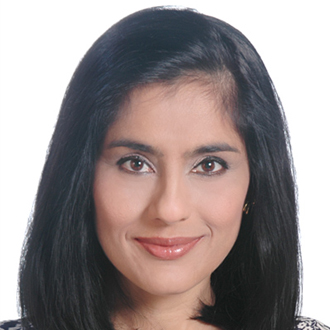“The most profound technologies are those that disappear. They weave themselves into the fabric of everyday life until they are indistinguishable from it.” —Mark Weiser

Deepika Deshpande
Published in Web3 Blog – Dec 12, 2024
Distributed Ledger Technology (DLT) emerged in 2008 with the launch of Bitcoin. The concept originated from discussions in the cypherpunk community’s electronic mailing lists, driven by libertarian ideals and the desire to create an alternative form of currency.
Although the technology was initially hailed as pathbreaking, the Bitcoin use case gained quick notoriety as it became and easy tool to circumvent law and regulation. Despite many subsequent reputational challenges, Bitcoin and, more generically, crypto have grown as an industry and along with DLT have confidently positioned themselves as an alternative asset class and a competing financial system. In recent years, while attention has focused on various non-traditional uses, we may have missed the moment when DLT crossed swim lanes to enter the domain of traditional finance.
In 2022, the Depository Trust & Clearing Corporation (DTCC)—a pivotal player in U.S. financial infrastructure—launched Project Ion. This initiative aims to create an alternative settlement platform using R3’s Corda DLT software. (R3 Corda is a distributed ledger technology platform specifically designed for the financial services sector.) Built as a private, permissioned DLT network, Project Ion is being developed in collaboration with major market participants and technology firms. Similarly, in Singapore, Partior is developing infrastructure solutions for a global unified ledger that simplifies the settlement process, eliminates manual reconciliation, and enhances transaction transparency.
Why are these developments significant? Proponents of DLT originally distrusted government oversight and centralized financial systems, which they viewed as antithetical to their ideals. Hence, DLT was designed as a peer-to-peer, open-source system relying on consensus mechanisms rather than centralized control. Transactions were secured through cryptographic hash functions and public/private keys, ensuring privacy and immutability. The system operated on tokens or blockchain-native currencies. It was philosophically and genomically trustless, decentralized and community owned and operated.
Market infrastructure initiatives like DTCC’s Project Ion and Partior’s solutions, on the other hand, are fundamentally centralized. These platforms operate as clearinghouses by facilitating, validating, and helping settle financial transactions. They sit at the heart of traditional finance and function within regulated sectors, often bearing significant responsibilities in areas such as consumer protection, anti-money laundering (AML), and regulatory reporting. This prompts the question: how did a technology designed for decentralization come into the service of an economic model that seems directly opposed to its principles?
DLT’s features, it so happens, can be adapted to enhance centralized systems. For example, Partior utilizes smart contracts to automate and pre-validate payments, improving operational efficiency and reducing settlement risks. DTCC’s Project Ion offers instant atomic settlements that reduce counterparty risk (since the transfer of assets such as securities and payment of cash occur simultaneously and conditionally.) They also help reduce the settlement time.
Tokenization, a key feature of DLT, converts traditional financial instruments into digital tokens that can be traded and settled more efficiently. By providing an immutable and transparent record of all transactions, DLT improves regulatory compliance, data integrity, and reporting.
DLT (or Web3 which is powered by DLT) is a broad concept. Depending on the point of reference and context of discussion, it can be viewed as an economic system, a marketplace, a cultural phenomenon, an alternative currency, or simply a tech stack. (For instance, as an economic system, Web3 represents a decentralized economy where value can be exchanged, stored, and managed without a centralized authority. On the other hand, as a cultural movement, it represents empowerment of individuals over corporations based on concepts of digital ownership (through NFTs) and privacy.) While this multifarious nature of DLT might perhaps make it difficult to understand, it certainly makes it more useful and applicable.
The different elements of DLT and Web3 can be combined in different ways and even mixed with traditional systems to create new and innovative solutions. Sometimes, the derivative applications of DLT may be hard to recognize. As is often the case, technologies can find their true potential in unexpected ways and places.
______________________________________________
About the Author
Deepika is a post-doctoral research fellow at SMU’s Web3 center. In this capacity, she tracks the latest developments in the Web3 space, helps create awareness about Web3 through blogs and articles and contributes to Web3 research.
She is a financial services industry leader, currently serving as Chief Operating Officer for a Singapore-based cross-border payments fintech, SingX. Her prior corporate experience includes 26+ years at Citi Asia Pacific. Deepika’s academic credentials include an MBA from the Indian Institute of Management (Ahmedabad) and a PhD from SMU (Strategy and International Business).
